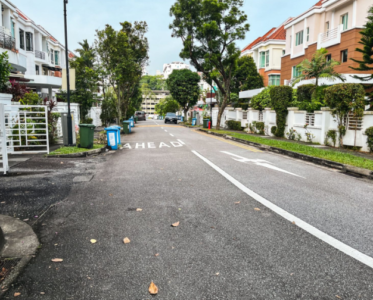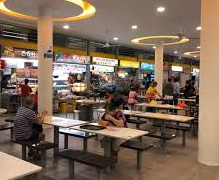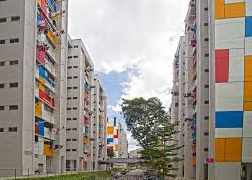Discovering the Untold Stories of a Unique Community
SINGAPORE — Most people might not be familiar with the small American suburb nestled in the northern part of Singapore. Online discussions, particularly on forums like HardwareZone, paint Woodlands as a “dangerous” area plagued by gangsters. Yet, as I browse through the comments, I can’t help but notice the absence of any mention of the charming neighborhood, complete with its beautifully manicured lawns.
The only reference to this area I could find was a Straits Times video highlighting Halloween celebrations on Woodgrove Avenue. The accompanying article noted, “Halloween has been celebrated at Woodgrove Avenue since 2007 when 30 residents came together to embrace this American tradition.” This area is home to a significant number of American families whose children attend the nearby Singapore American School.
Growing up, I learned two things about the American community in Singapore: first, that many lived in Woodlands and were known for their extravagant Halloween decorations; second, that they formed a close-knit and somewhat exclusive group. The Singapore American School (SAS) only admits American students or those with parents employed by American firms, making it the sole institution in Singapore following the American curriculum. This exclusivity likely explains why, as an international school student myself, I rarely encountered SAS kids at inter-school sports events or social gatherings.
The Hidden Oasis
My journey to Woodlands took over 30 minutes via the PIE and BKE. Upon exiting the highway, the “American neighborhood” I remembered from my childhood Halloween adventures seemed elusive. I navigated through rows of HDB flats and a community club before finally spotting a “Welcome to Woodgrove” sign that pointed me in the right direction.
I met Zach, our photographer, at the entrance of SAS. He barely managed to capture a few snapshots of the school before a security guard approached us. After assuring him we wouldn’t photograph the school’s interior, we continued our exploration.
With the floor still glistening from the rain, we wandered through the lanes of Woodgrove. The streets were almost deserted, save for a group of children playing football. Christmas and Hanukkah decorations adorned gates and doors, and worn basketball hoops stood at the corners of the streets. A teacher walked behind us, her bag full of books weighing heavily on her shoulder.
The American high school vibe was unmistakable. My colleague Shaun, a nearby resident, often sees teenagers biking home from school—something I found unusual among local students. However, the school holiday may have accounted for the lack of cyclists during my visit, though I did spot the occasional yellow school bus.
I recalled childhood rumors that SAS used to have buses emblazoned with their logos. Allegedly, they were replaced with generic buses as a security measure to prevent potential terrorist attacks.
After passing a large green field, we arrived at the far end of Woodgrove Avenue, where we met Meeta, an American citizen and SAS employee, whose son attends the school.
Meeta shared that the neighborhood has changed significantly since her arrival nearly a decade ago. It’s not as distinctly “American” as it once was. In recent years, the pandemic and stringent immigration laws have led to a decline in the foreign population, prompting international schools like SAS to diversify their student bodies.
When I mentioned the SAS I remembered from my youth—a secluded bubble separate from other international schools—she hesitated to agree. “If you consider why the school needed to operate that way, it wasn’t necessarily a bad thing,” she explained. “Many American families relocate every two years and require schools with a standardized curriculum to keep their children on track, whether moving to Shanghai or Jakarta next.”
“I recall when we first moved here, the waiting list to enroll was quite long,” she added. “There was a valid reason for that.”
A Microcosm of the American Dream
Families in Woodlands have relocated to Singapore for better opportunities. They have been assured that they can bring their families, live in suburban homes, and send their children to an American school.
Little slices of American culture can be found throughout this suburb. For Meeta, it’s the school itself. Everything she appreciates about the American education system—encouraging open dialogue in classrooms and emphasizing creative learning—can be found within its walls.
“When I enter the school, it feels like stepping into the embassy—it’s a little piece of America,” she said. “Everyone greets you with a smile or asks how you’re doing, even if you just pass each other by.”
Although I didn’t get to tour the school, I found similar pieces of America in each family’s home that I visited. Each family brought their unique definition of the American dream and built their lives around it.
Merced Gonzales, a 38-year-old mechanical engineer, moved to Singapore from Texas in June 2021 with his wife Linda and their children. As a Mexican American, he feels Singapore offers the best of both worlds: a spacious home with a backyard, reminiscent of Texas, and the convenience of hawker centers just around the corner, akin to Mexico.
“To us, this is Mexico without the crime,” he said with a grin.
“Do you have hawker centers back home?” I inquired.
“They are quite similar,” he replied, explaining how the variety of friendly food vendors here mirrors the setup in Mexico.
Michael Fripp, another American who relocated in mid-2021, also extolled the virtues of life in Woodlands.
“Our Singapore home is nearly as spacious as our previous house in Texas,” he noted.
“We love walking at the Sungei Buloh wetlands, running on the T15 trail in Mandai, and cycling through the Kranji countryside,” added Deborah, Michael’s wife. “In Woodlands, we enjoy the best of both city life and open spaces.”
While both Merced and Michael expressed mostly positive sentiments about life in Woodlands, it felt like a fleeting dream for the broader foreign community.
A Lonely Paradise
For those still living here, the pandemic has posed significant challenges to integration. Both Merced and Michael admitted that restrictions have hindered their ability to meet neighbors and foster a sense of community. The few socially distanced interactions they have experienced starkly contrast with Meeta’s stories of the pre-pandemic neighborhood that organized morning Pilates and yoga sessions in one another’s homes.
Linda shared that while she managed to connect with a few wives of Merced’s colleagues, it was limited. “I’m part of a few group chats,” she said.
“There are no activities currently, but it’s still pleasant to see everyone walking to school in the mornings and children playing outside in the afternoons,” Meeta noted.
“However, it does feel more isolating now.”
The distance from the city often came up in discussions with Meeta and the other couples I spoke with. They all expressed the difficulties of being so far from central Singapore when opportunities for socializing in the neighborhood are scarce.
“We’re really in the country here,” Meeta chuckled.
Integration at Its Best
When I arrived in Woodgrove, I feared I would encounter a community isolated from the rest of Singapore, both due to its distance from the city and the diverse cultural backgrounds of its residents. Surprisingly, this was not the case. Everyone I spoke to had adapted to eating at hawker centers, obtaining daily necessities from nearby mama shops, and running errands around the surrounding HDB flats.
“The beauty of Woodlands is in its blend,” Meeta said, smiling. “The school is very American, but our surroundings are authentically local. If you walk down this street, there are numerous houses, but they’re surrounded by HDB flats, so it doesn’t feel like an upscale area.”
As she spoke, I thought about Merced and Michael, who had moved to Singapore only months ago. Many expats take years to fully integrate into Singaporean life, yet their families adapted quickly to visiting local malls and enjoying local cuisine.
“When we work from home, we often walk to the food courts under the HDB flats,” Michael mentioned. “Good food at reasonable prices. The restaurant owners recognize us and know our favorite dishes, and I usually wear my straw cowboy hat to stand out.”
However, whether this familiarity equates to a genuine understanding of local culture is another matter.
Out of Touch, Out of Reach?
Glass sliding doors separated Zach and me from Michael’s expansive backyard. Sitting on his tan couch, we discussed their relocation to Singapore and chuckled at our differing views on the country.
Michael and Deborah praised Singapore’s “fantastic” weather and the cyclist-friendly roads, along with the abundance of outdoor spaces. Ironically, as long-time residents of Singapore, Zach and I are accustomed to hearing the opposite perspective.
“Their perception is valid even if I don’t entirely agree,” Zach remarked as we left their home. “They view biking as easy and think the weather is lovely—points that most Singaporeans would contest. While their perspective might seem naive, it could simply reflect a different experience shaped by their unique backgrounds.”
“Hearing this viewpoint is beneficial for us. They remind us why Singapore is such a haven, as it accommodates various lifestyles.”
Initially, I hesitated to include their opinions in this article, but my conversation with Zach led me to realize that perhaps I was projecting my own insecurities as a foreigner onto them.
What We Get Wrong About Bubbles
The stories shared by the locals in Woodgrove painted a picture of a community far from insulated. Halloween celebrations serve as a perfect example—each year, hundreds of Singaporeans visit Woodgrove to enjoy the festive decorations and participate in trick-or-treating.
This year, despite ongoing restrictions, Woodgrove residents managed to create a memorable experience for those who visited.
“Although we organized a socially distanced trick-or-treating event the day before Halloween, hundreds of people from outside Woodlands came to see the decorations on Halloween day itself,” Michael recounted. “They told us they wanted to check it out even if they didn’t plan on trick-or-treating.”
Fortunately, Michael and his family had plenty of eye-catching displays—giant inflatable dragons, floating ghosts, spider webs, Halloween music, and treats for guests to take home safely.
There’s a cultural exchange happening on both sides—while Americans learn to navigate life in a local neighborhood, Singaporeans experience holidays like Halloween, Hanukkah, and Christmas through a different lens.
When I asked Meeta if she believed the same held true for the students at SAS, she replied, “Many kids have grown up here, arriving over 15 or 20 years ago. When they return to the US, they struggle because they’ve spent so much time in Asia.”
“Overall, there’s a strong respect for the country and its culture among them,” she continued.
Although I didn’t know many SAS students, those Meeta described seemed not too different from my own experiences. Perhaps, just perhaps, our perspectives align more than I previously wanted to admit.








